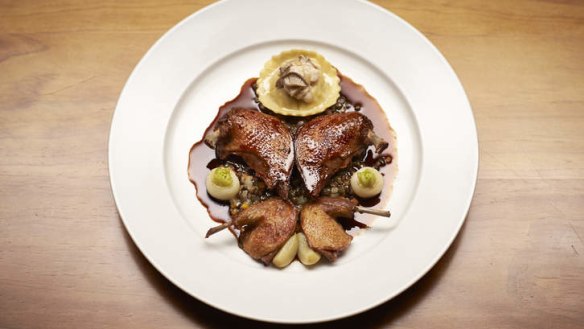Marco Pierre White's top tips for home cooks
From how to cook the perfect steak to why we fry onions, Marco Pierre White shares some cooking wisdom.

Potatoes. The much used, much loved staple of many pantries is an oft-undervalued ingredient. But not by chef Marco Pierre White. Mastering the basics, such as a silky potato mash, will give home cooks the building blocks to take on bigger challenges.
A hint from the chef himself: use baked, not boiled, potatoes.
“I bake potatoes in tin foil on a bed of salt,” he explains.

Once baked, leave them wrapped until ready to serve the rest of the meal. Then, scoop the flesh into a bowl, add olive oil, salt and chopped parsley and smash it with a fork.
White also brings the butter to room temperature before incorporating. “It knocks the heat out otherwise”.
The reformed enfant terrible of the gastronomic world and one of Britain's greatest chefs who, at age 33, was awarded three Michelin stars, is half way through a whirlwind visit to Melbourne to film MasterChef Australia's 'Marco Week' airing this week on Channel Ten.
Out of the kitchen and away from the cameras, he's no less formidable. Even divulging his tricks of the trade and foolproof techniques for home cooks is delivered with that famous Marco Pierre White passion.
“Everyone can cook,” he explains. “It's whether they have the confidence in the kitchen.”
Here's some advice White handed down for eager at home cooks.
Go back to basics
Forget the kitchen trickery and put your energies into the cooking of a dish. Teach yourself how to roast the perfect chicken and cook the perfect steak before attempting fancy cookery.
Spend time trussing a chicken correctly or deboning a quail and ask questions. Techniques can be explained through inquiring.
“Ask yourself why you fry an onion,” White explains. “You fry an onion to remove water content in it and to release the natural sugars and flavours. That's when you get the caramelisation and scorching desired.”
Allow generosity to be the presentation.
“Don't try to impress people,” White says. “Feed them and feed them well and that will impress them.”
When White cooks meals at home he uses his pots and pans as the vehicle of presentation. Instead of plating a risotto, he puts it on a wooden board in his Le Creuset pan with a chunk of Parmesan on the side and a small grater.
Cook meat on the bone for added flavour and serve it in its natural form at the table. It's about staying true to the meal's origins and “respecting mother nature”.
Cooking the perfect medium-rare steak
“Firstly, invest in a good griddle pan,” White states. Put it on the stove and turn the heat to high. Massage olive oil into the steak and season with salt. When the griddle pan is really hot place the steak in. For a 300g steak, it should take about one to two minutes. Turn the steak to create a crisscross on the meat and leave it for another minute or until the meat has a cooked look half way up its side. Turn the meat and when bubbles of juice start to pierce the cooked crust, take it off the heat. Leave it in a warm place to rest, uncovered.
“When you're a chef and the grill is lined with steaks during a busy service, it's your eyes that do the cooking,” Whites says. “The same applies at home.”
Don't waste the beast
Learn what part of an animal can be used. Turn leftover roast chicken bones into stock. Make a fish curry with leftover fish heads. Familiarise yourself with lamb necks, pigs trotters, livers, and heart. “It's about building confidence,” White says.
Invest in good pots and pans
If it were up to White, non-stick pans wouldn't exist in home kitchens. Heavy based pots, pans and roasting trays encourage caramelisation and extra flavour. “It's worth the investment,” White says.
RECIPE
White is an old hand at whipping up bechamel sauce. He uses this foolproof recipe when making one of his daughter's favourite meals, mac 'n' cheese.
“The perfect bechamel sauce is very simple,” he says. “It's the method that is important.”
The Great White Sauce
Ingredients
30 g plain flour
30 g butter
50ml double cream
450ml milk
Use a whisk to make the sauce, not a spoon. Put a pan on medium heat, add butter and melt. Add flour and work it through the butter to make a white roux. Add 150ml of cold milk and continue stirring on low heat. When it's combined add another 150ml of milk and continue stirring. Turn the heat up and add the remaining 150ml of milk and continue to stir. You want to incorporate as much air as possible. As the heat comes into the sauce and it begins to thicken, add cream and continue to stir until desired thickness is achieved.
The best recipes from Australia's leading chefs straight to your inbox.
Sign up